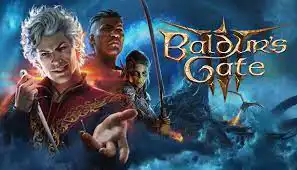There's a query that often circulates among Baldur's Gate 3 enthusiasts regarding the character of the female Drow, or dark elves. Does the game suggest they are inherently evil via their portrayal? This perception mainly stems from the matriarchal nature of Drow society wherein women occupy the top echelons of the power structure.
We know that the female Drow play a dominant role in the socio-political organization of this mythical universe. However, this doesn't necessarily bind them to an evil alignment. The ethnocentric perspective offered by other races often paints the Drow society as 'evil.' The fact is, the nature of the power structure makes the matriarchs assertive and ruthlessly protective of their position.
When dissecting the alignment of the Drow in traditional RPG terms, it's crucial not to mistake ambition for evil. Yes, the power dynamics within the Drow society are steep, but they derive from a place of survival rather than malevolence. This makes the 'evil' depiction more nuanced than first appears.

Indeed, the Drow society's harsh conditions necessitate such a hierarchical structure to survive in the harsh Underdark environment. The inhabitants of this subterranean realm must adapt out of necessity, not malicious intent. This justifies the strong matriarchal society necessary for the Drow race's preservation.
The Matriarchal Hierarchy and Power Dynamics
The Drow race is ruled by Priestesses of Lolth, the Spider Queen goddess, in a strict matriarchal society. The society is hierarchical, with the Priestesses and Matron Mothers (leaders of the noble houses) at the top, wielding ultimate authority. The males are generally subordinates, serving as warriors, administrators, or servants with minimal political power.
It's important to note that the matriarchal structure and the inherent power dynamics contribute to perceived malevolence. However, they are also a survival strategy within the harsh Underdark environment. The Drow society's power play might seem ruthless to outsiders, but it's essential for their very survival.
Even the religious obeisance to Lolth, a deity often characterized as 'evil,' isn't as simple as it seems. Worship of Lolth is a racial necessity than an ubiquitous representation of inherent malevolence in the Drow race. The loyalty displayed to Lolth is more about survival and less about evil intent.
In fact, Baldur’s Gate 3 recognizes the nuances and the gray areas of Drow society. Instead of painting them all as 'evil' based on the traditional alignment system, the game allows space for individual characterization. The game presents Drow characters with a complexity that mirrors the real world, where absolute evil is a rarity, not a norm.
The Drow: Not Universally Evil
While the Drow may engage in 'evil' deeds as a race in the Baldur's Gate universe, this behavior is motivated more by their harsh living conditions and less by inherent evilness. Thus, to dismiss all female Drow as universally 'evil' seems simplistic and unfair.
This quite static 'good vs. evil' dichotomy doesn’t hold up when examining the Drow. Sure, certain behaviors and actions of the Drow appear 'evil' to external observers, however, it's important to understand the context and social construct that these actions originate from. The Drow society's 'evil' has nuanced layers that need to be understood.
Moreover, the Drow society's structure is a critique of patriarchy, where societal roles are strictly gender-based, and power is fixed. The matriarchal power structure and the dominance of the female Drow should not equate to 'evilness'. Instead, it reasserts that power dynamics can be a survival strategy adaptable to challenging environmental conditions.
Is every female Drow then evil? Not necessarily. It's critical to view the alignment of a character as a spectrum rather than fixed designations of 'good' and 'evil.' In this perspective, any character, Drow or otherwise, can represent numerous shades of good and evil depending on their actions, context, and personal motivations.
The Alignment Spectrum in Role-playing Games
The concept of character alignment in role-playing games isn't as black-and-white as it appears. The alignment spectrum can vary, providing leeway for characters to show different facets of their personalities and beliefs over time. This applies to the Drow in Baldur's Gate 3 as well.
Characters can depict both benevolent and malevolent actions, drifting along the alignment axis according to the circumstances they navigate. It allows room for a complex alignment, adding depth and variation to character development. Take the example of a Drow character who performs 'evil' actions for the 'greater good' in a given context. Would it be fair to blanket-label them as 'evil'?
The alignment system is less about inherent 'goodness' or 'evilness' and more about the ethical and moral decisions characters make in various circumstances. It's a dynamic, shifting spectrum that accounts for a character's journey and transformation throughout the narrative.
It's worth noting that Baldur's Gate 3 allows for divergent paths and various character backstories. Characters are not set on a singular trajectory of 'good' or 'evil.' They have the capacity to navigate the murky waters of ethical ambiguity, making them all the more real and relatable.
Conclusion
Understanding the female Drow's characterization in Baldur's Gate 3 requires us to examine the context in which they exist. Their so-called 'evilness' has more to do with their cultural norms and survival strategies within a unique socio-historical construct rather than some inherent alignment to evil.
Qiite contrary to a reductionist view, it's more accurate to posit that the female Drow, like any character, can oscillate between different moral and ethical standings. This would make them neither inherently good nor evil, rather complex characters having their own motivations and circumstances.
Ultimately, Baldur's Gate 3 encourages players to step away from binary understandings of 'good' and 'evil.' Recognizing that the alignment of a character is fluid and contingent upon their circumstances allows players to appreciate the intricacy of character development.
It opens up possibilities for Drow characters, male or female, to be more than their societal roles within Baldur’s Gate 3’s narrative, underlining the need to view characters in their full complexity, rather than resorting to sweeping generalizations based on race stereotypes.